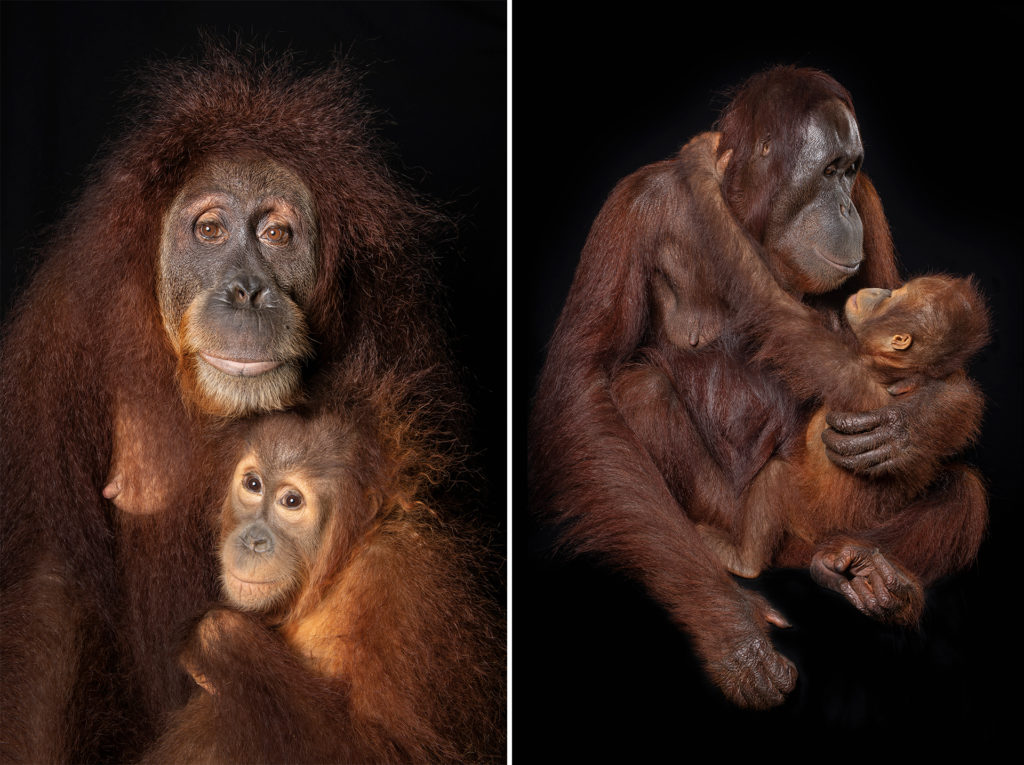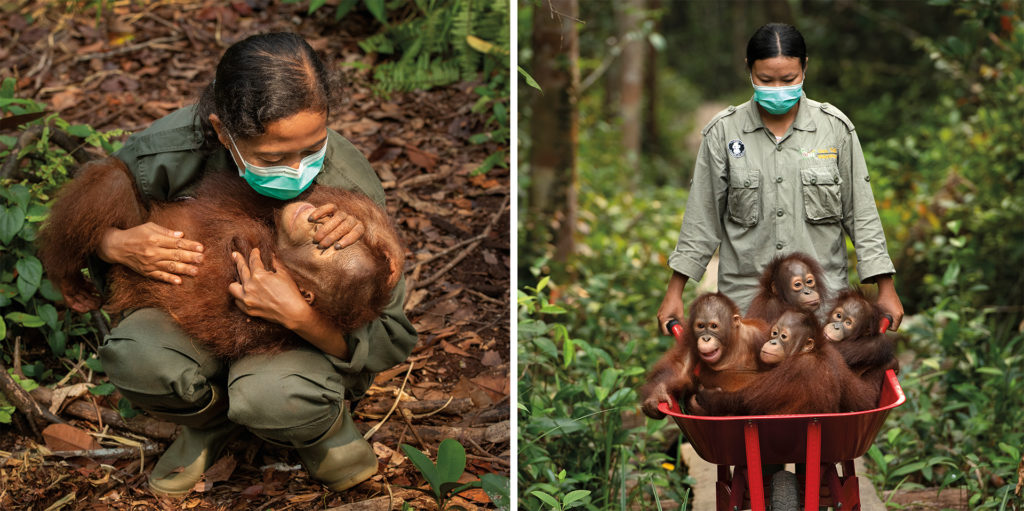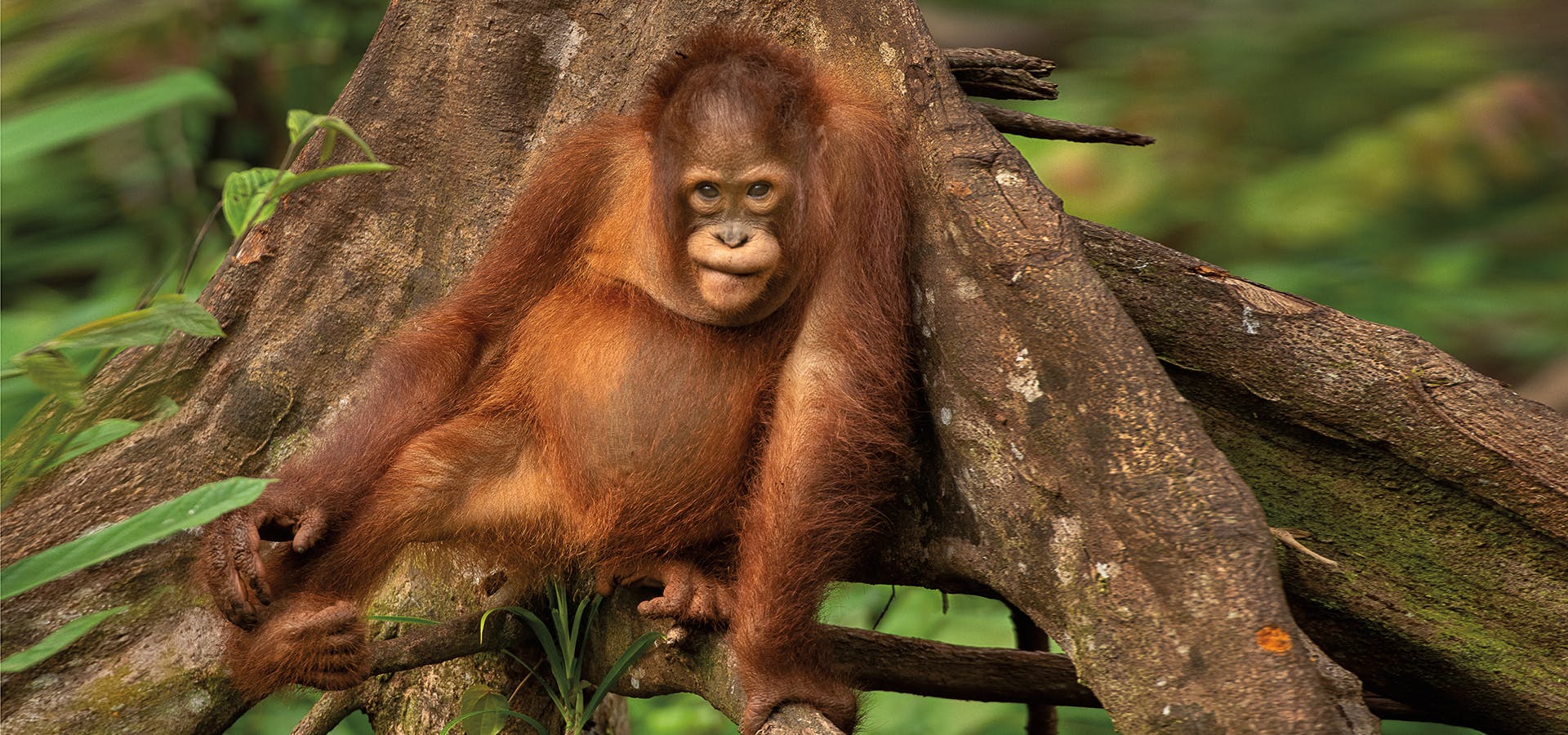When you look into the eyes of an orangutan there’s no doubt a highly intelligent sentient being is looking back. That shouldn’t be surprising since we share 96.4 percent of the same DNA with these fellow great apes. (Humans, orangutans gorillas, chimpanzees and bonobos fall into this classification.) This also translates to the love between a mother and child.

Unlike their cousins, orangutans are found in the wild only in Borneo and Sumatra. While the future for many species is uncertain, orangutans are hanging on by a particularly thin vine. Their native habitats are in danger due to human incursions, most often in the form of palm oil plantations. The lucrative and easy to produce oil is not only one of the most efficient sources of vegetable oil it is used in an almost endless list of products from chocolates to cosmetics. Here in lies the problem.
The rapid expansion of palm oil plantations threatens some of the planet’s most sensitive habitats and at the same time is economically vital for the people of Borneo and Sumatra. The best situation is for its production to be done sustainably without destroying forest. It’s a delicate balance that must be attained for if things continue on the same path, orangutans will become the first great ape species to become extinct in the wild.
NGOs such as the Borneo Orangutan Survival Foundation (BOSF) are at the forefront of the battle, rescuing orangutans that have been the victims of poaching or injured or orphaned in palm oil plantations. The Indonesian NGO also replants vast areas of the Bornean Forest that had fallen victim to fires or plantations.

In addition to photographing orangutans in their native habitat and at BOSF facilities in Borneo, I did portraits “eyes are the window to the soul’ type portraits at the Simon Skjodt International Orangutan Center in Indianapolis, the Center for Great Apes in Florida, the Singapore Zoo and the Tama Zoo in Japan. The results are in my book and touring exhibition, “The People of the Forest.” The title comes from the derivation of “orangutan” from the Malay and Indonesian words orang (people) and hutan (forest).
I include an interview in the book with primatologist Dr. Rob Shumaker of the International Orangutan Center in Indianapolis who is conducting cognitive research studies and observing an incredible range of complex behaviors including gift giving. Orangutans use “calculated reciprocity” which involves weighing the costs and benefits of gift exchanges and keeping track of these over time. Orangutans are the first non-human species documented to do so. His studies also demonstrate that they have a photographic memory.
In the wild orangutans use a variety of sophisticated tools for both insect extraction from the hollows of trees and seed-extraction tools for harvestingseeds from hard-husked fruit. These techniques are being taught to orphaned orangutans at their Forest School at the BOSF facility in Kalimantan by their surrogate human “mothers.” The goal is for them to graduate and eventually be introduced into the wild after spending time on a relocation island where their rewilding progress can be monitored.

One of the orangutans skills is the construction of sleeping nests made from multiple layers of branches and foliage. These techniques are traditionally passed down through the generations by young orangutans observing their mother’s nest-building behavior. Initially, a suitable tree is located, one with branches that they calculate can maintain their weight, then branches are pulled together and joined at a point. After a foundation is built, orangutans bend smaller, leafy branches braiding branch tips onto the foundation to create in essence a “mattress.” In addition, orangutans may add, “pillows, blankets, roofs and bunk-beds to their nests.
The forests of Borneo and Sumatra are vital to the survival of orangutans. They are the only primarily arboreal great ape as well as the largest tree living mammal in the world. If BOSF and other NGOs as well as the government doesn’t succeed in protecting the forest the future is certain. Simply put, if we lose the forests, we lose the orangutans. As Dr. Terry Maple has stated: “Making an orangutan live on the ground is the same as making a St. Bernard live up in a tree.”











